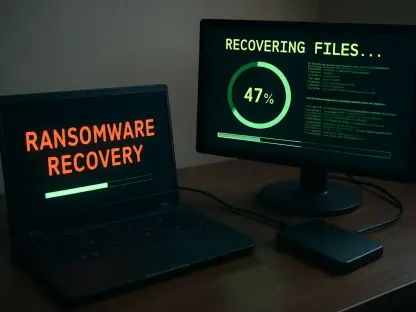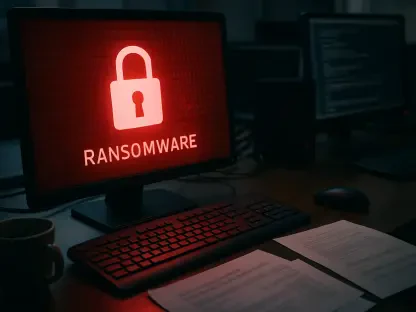In a significant development for cybersecurity, a major firewall provider has recently concluded an investigation into a breach affecting configuration backup files stored in its cloud service, raising alarms across the industry. This incident, impacting a critical component of network security, exposed sensitive data that could potentially be exploited by malicious actors. The breach targeted accounts using a specific backup feature, and the scope of affected users has widened following the final report. With firewall configurations often containing credentials and other vital information, the urgency to address this issue cannot be overstated. Organizations relying on such services now face the challenge of securing their systems against potential unauthorized access. This situation underscores the broader risks of storing sensitive data in the cloud and highlights the need for robust encryption and proactive security measures. As details emerge, the focus shifts to understanding the full impact and implementing necessary safeguards to prevent future incidents.
1. Unveiling the Scope of the Incident
The investigation into the exposure of firewall configuration backup files in certain cloud accounts began with a knowledge base article released on September 17. By October 8, the inquiry was finalized, and the advisory was updated to reflect new findings. Initially, it was reported that fewer than 5% of customers utilizing the backup feature were affected. However, the revised statement now confirms that all users of the cloud backup service were impacted. This revelation significantly broadens the scope of the incident, affecting a larger pool of organizations than previously anticipated. Given the sensitive nature of data stored in firewall configurations, such as credentials and settings, there is an urgent need for affected parties to take immediate action. The company has emphasized that only newer generation firewalls, specifically Gen 7 and beyond, employ strong encryption like AES-256 for exported configuration files, leaving older systems potentially more vulnerable to exploitation.
Following this update, efforts are underway to contact all affected customers and partners directly. Detailed instructions have been provided to help organizations verify whether their specific backup files were compromised during this breach. This outreach is critical, as the exposed data could be leveraged by threat actors to gain unauthorized access to networks. Firewall configurations often include user details, domain settings, and certificates, all of which are valuable to malicious entities. Historical data shows that such files have been targeted by sophisticated groups, including nation-state actors and ransomware operators, for use in subsequent attacks. The expanded scope of this incident serves as a stark reminder of the risks associated with cloud-stored data and the importance of maintaining stringent security protocols. Organizations must now prioritize assessing their exposure and implementing recommended measures to mitigate potential threats stemming from this breach.
2. Assessing the Potential Risks
The implications of exposed firewall configuration files are far-reaching, as these files contain critical information that can be exploited to penetrate an organization’s network. Details such as user and group settings, DNS configurations, log settings, and certificates are often embedded within these files, providing a roadmap for attackers. If accessed by malicious entities, this data could facilitate unauthorized entry, data theft, or even broader network compromise. The sensitivity of such information makes it a prime target for cybercriminals seeking to exploit vulnerabilities. Reports from security experts indicate that threat actors have historically exfiltrated similar files to plan and execute future attacks, amplifying the severity of the current incident. This breach underscores the need for organizations to treat firewall configurations with the highest level of security and to remain vigilant against potential misuse of exposed data.
Beyond immediate access concerns, the long-term risks of such exposures include reputational damage and financial losses for affected organizations. A breach of this nature can erode trust among clients and partners, especially if sensitive customer data is compromised as a result. Additionally, the cost of remediation, including system updates, credential resets, and potential legal ramifications, can be substantial. The involvement of sophisticated threat groups, such as nation-state actors or ransomware gangs, further complicates the landscape, as these entities often have the resources to exploit stolen data over extended periods. For organizations using cloud backup services, this incident highlights the importance of evaluating the security of third-party platforms and ensuring that adequate safeguards are in place. Addressing these risks requires a comprehensive approach, combining immediate containment with strategic planning to prevent similar incidents in the future.
3. Immediate Steps for Verification
To assist organizations in navigating this security incident, a comprehensive list of impacted devices has been made available through the designated portal under Product Management > Issue List. This resource categorizes devices into three distinct groups: “Active – High Priority” for those with internet-facing services enabled, “Active – Lower Priority” for devices without such services, and “Inactive” for units that have not communicated with the system for 90 days or more. Accessing this information is a critical first step for organizations to determine the extent of their exposure. By identifying affected devices, businesses can prioritize their response efforts and allocate resources effectively to mitigate risks. The availability of this detailed breakdown ensures that no affected system is overlooked during the initial assessment phase, providing a clear starting point for subsequent remediation actions.
Once the list of impacted devices is reviewed, organizations are encouraged to take swift action based on the categorization provided. High-priority devices, due to their internet-facing nature, pose the greatest immediate risk and should be addressed first to prevent potential exploitation. Lower-priority and inactive devices, while less urgent, still require attention to ensure comprehensive security. The portal serves as a centralized hub for tracking and managing affected systems, streamlining the process of identifying vulnerabilities. Additionally, a dedicated support team is accessible through the platform to assist with any challenges encountered during this verification process. Organizations can initiate a new case for tailored guidance, ensuring that they have the necessary support to navigate this complex situation. Taking these initial steps promptly is essential to minimizing the window of opportunity for threat actors seeking to exploit exposed configurations.
4. Containment Strategies to Minimize Exposure
For each device confirmed to be affected, specific containment measures are recommended to reduce the likelihood of unauthorized access during the remediation process. These steps include disabling or restricting access to HTTP/HTTPS and SSH Management over the WAN, which are common entry points for attackers. Additionally, limiting or disabling access to SSL VPN, IPSEC VPN, and SNMP is advised until full remediation is completed. Another critical action involves restricting inbound WAN access to internal services allowed via NAT/Access Rules, further reducing exposure to external threats. Implementing these containment strategies promptly can significantly lower the risk of compromised configurations being exploited. Organizations must carefully execute these measures to ensure that no unintended disruptions occur to legitimate network operations while still bolstering security.
The importance of these containment actions cannot be overstated, as they serve as a temporary shield while more permanent fixes are applied. By limiting external access points, organizations can effectively isolate potentially vulnerable systems from malicious actors scanning for weaknesses. This approach buys valuable time to address underlying issues without exposing the network to immediate danger. It is also advisable to monitor network activity closely during this period for any signs of unusual behavior that might indicate an attempted breach. While these steps are not a complete solution, they form a crucial part of a layered defense strategy, protecting critical assets during a vulnerable phase. Ensuring that all relevant teams are informed and aligned on these containment protocols is vital to their successful implementation, minimizing gaps in coverage that could be exploited by attackers.
5. Updating Configurations for Enhanced Security
Affected customers may receive communications providing a new configuration file, also known as a preference file, derived from the latest backup stored in the cloud. This updated file introduces several security enhancements, including randomized local user passwords, which will require a reset before users can regain access. Additionally, TOTP binding, if previously enabled, is reset, and IPSec VPN keys are randomized, necessitating manual reconfiguration on peer termination points. These changes are designed to prevent exploitation during the remediation process by ensuring that old credentials and settings cannot be used maliciously. If the provided file does not align with an organization’s desired settings, manual updates to credentials and configurations are possible, followed by creating and exporting a new system backup to maintain security.
Adopting this updated configuration file is a critical step in securing affected systems against potential threats. The randomization of passwords and keys disrupts any prior knowledge attackers might have gained from exposed data, rendering stolen information less useful. However, organizations must ensure that these changes are communicated effectively to users to avoid confusion or access issues. Proper documentation of the new settings and a structured rollout plan can help mitigate disruptions during this transition. For those opting for manual reconfiguration, attention to detail is paramount to ensure that no vulnerabilities are reintroduced. After completing these updates, verifying the integrity of the new backup is essential to confirm that all security measures are in place. This process, while time-intensive, is a necessary investment in safeguarding network infrastructure against the fallout of the breach.
6. Comprehensive Credential Reset Guidelines
A detailed list of credentials to reset has been provided, organized into seven categories based on criticality. The first category, Core Authentication Systems, is deemed critical and should be addressed immediately. This includes resetting local admin and user passwords, enforcing strong password policies, resetting TOTP for multi-factor authentication, and requiring users to re-bind authenticator apps. External authentication systems, such as LDAP and RADIUS/TACACS+, also require updated bind account passwords and shared secrets. The second category, VPN & Remote Access Infrastructure, follows as a critical priority, involving replacement of IPSec VPN pre-shared keys, updates to GroupVPN policies, and resetting passwords for WAN interfaces like L2TP, PPPoE, and PPTP, in coordination with ISPs. SSLVPN bookmark passwords must also be updated to prevent unauthorized remote access.
Moving to high-priority areas, the third category, Cloud & External Integrations, includes rotating IAM access keys for AWS integrations, resetting Dynamic DNS provider passwords, and updating credentials for Network Access Control, SNMP monitoring, and WWAN backup connections. Medium-priority categories cover Email & Reporting Services and Wireless Infrastructure, requiring resets for log automation accounts, FTP/HTTPS reporting credentials, and shared keys for wireless interfaces and access points. Lower-priority areas include User Services & SSO, addressing guest authentication and SSO shared secrets, and Infrastructure & Legacy Systems, covering NTP, signature proxy, and routing protocol passwords. Detailed guides and step-by-step instructions for each reset type are available in the knowledge base, ensuring organizations can execute these changes effectively to secure their systems.
7. Reflecting on Lessons Learned
Looking back, the completion of this investigation marked a pivotal moment for organizations relying on cloud-based backup services for critical network configurations. The realization that all users of the service were affected underscored the scale of the challenge faced. Efforts to reach out to impacted customers and provide actionable guidance demonstrated a commitment to transparency and resolution. The incident highlighted vulnerabilities in storing sensitive data online, particularly for older systems lacking advanced encryption. Containment measures and credential resets, prioritized by urgency, formed the backbone of the response strategy. These actions, while resource-intensive, were necessary to safeguard networks from potential exploitation by sophisticated threat actors who have historically targeted such data for malicious purposes.
As a path forward, organizations should consider adopting more robust encryption standards across all devices and regularly reviewing the security of third-party services. Investing in continuous monitoring and rapid response capabilities can help detect and mitigate future breaches more effectively. Additionally, fostering a culture of cybersecurity awareness among staff ensures that best practices are followed consistently. Leveraging the detailed resources and support provided during this incident can serve as a blueprint for handling similar challenges. By taking proactive steps now, businesses can strengthen their defenses and reduce the likelihood of recurring exposures. This experience serves as a reminder that cybersecurity is an ongoing journey, requiring vigilance and adaptation to evolving threats in the digital landscape.









